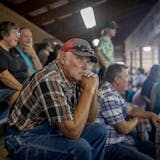Buying a condo? Get a home inspection, also known as a condo inspection. Even though there is typically less maintenance and responsibility of the individual owners, condos can still experience a lot of the same issues that single family homes experience. Instead of waxing on about the importance of having a home inspection when buying a condo, I've put together a compilation of stuff we've found while inspecting condos. Photos are just more fun.
Insufficient insulation: If a condo has an attic, we inspect the attic. We find all the same defects in condo attics that we do in single family homes. More on attic defects here: Who inspected your attic? The photo below shows insufficient insulation at a new construction condo.
Aluminum wiring: This is a major issue. It's not common, but it's a big deal when it happens. Condos built during the time that aluminum wiring was used (approximately 1965 - 1972), or re-wired during the same period may have aluminum wiring. This typically can't be identified without opening up the electrical panel. More on that topic here: aluminum wiring.
Smoke alarms: They're not extremely expensive and it's not a life and death issue but ... no, wait, I take that back. It is a life and death issue. Smoke alarms save lives. When they're more than 10 years old, we recommend replacement. We also check for proper placement and recommend installing photoelectric smoke alarms when not present. Once they've turned yellow, they're typically over 10 years old.
Wiring defects: The missing cover plate shown below is easy enough to correct, but do you see what else is wrong here? The outlet box is improperly recessed at the wall. The repair here is to have a box extender installed, also known as a "goof ring."
Disconnected conduit: The metal conduit isn't properly secured at the compressor below, which means the metal box of the compressor isn't bonded. This seems fairly innocuous, but if someone stepped on that whip, one of those wires could easily get cut by the metal at the air conditioner. If that happened, the entire cabinet of the air conditioner could be energized, creating an electrocution hazard.
Extension cords: They get used at condos, too. This shows an extension cord behind a washer and dryer. Permanently installed appliances should be plugged directly into outlets, not extension cords.
FPE Stab-Lok panels: They're bad news, and they should be replaced. There are tons and tons of condo units with these panels. More on that topic here: FPE Stab-Lok panels are hazardous.


